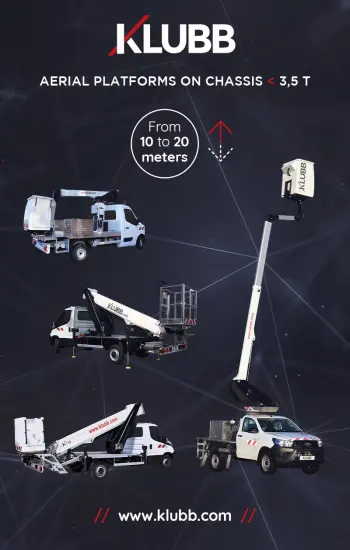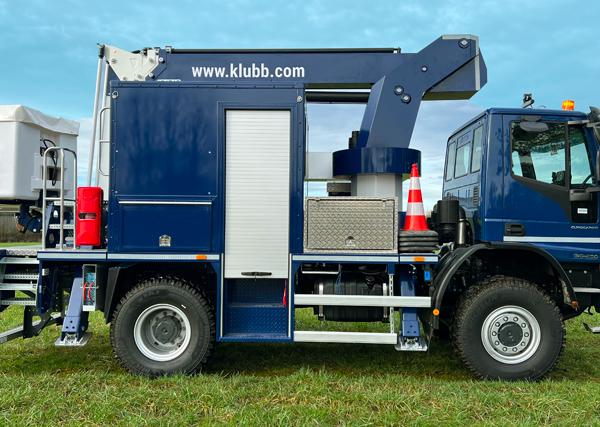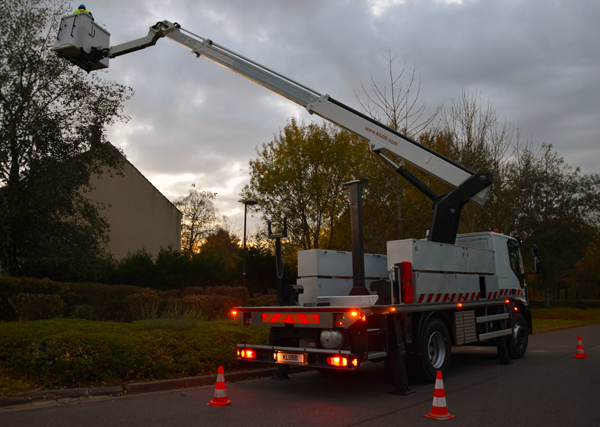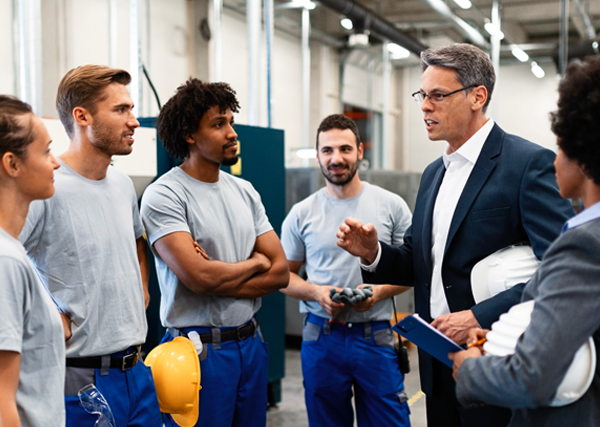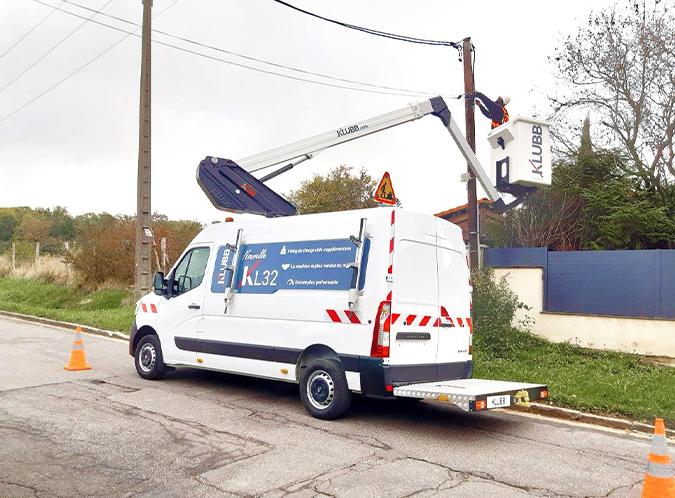
Das Bedienen von Hubarbeitsbühnen (HAB) kann eine anspruchsvolle und gefährliche Aufgabe sein, weshalb eine angemessene Schulung unerlässlich ist, um die Sicherheit der Arbeiter und der Öffentlichkeit zu gewährleisten. HABs werden häufig in verschiedenen Branchen wie Bauwesen, Wartung und Transport eingesetzt, um Aufgaben in Höhen auszuführen, die auf andere Weise unerreichbar sind. Die erforderliche Schulung für Arbeiter, die HABs bedienen, umfasst eine breite Palette von Themen, einschließlich Geräteinspektion, sichere Bedienung, Notfallverfahren und Absturzsicherung. Dieser Blogbeitrag wird die verschiedenen Arten von Schulungen untersuchen, die für Arbeiter erforderlich sind, um HABs sicher und effizient zu bedienen.
Bedeutung der Schulung vor der Verwendung von Hubarbeitsbühnen:
Schulungen sind für Arbeiter, die Hubarbeitsbühnen bedienen, entscheidend, da sie dazu beitragen, ihre Sicherheit und die Sicherheit der Menschen in ihrer Umgebung zu gewährleisten. Hier sind einige Gründe, warum Schulungen wichtig sind:
- Vermeidung von Unfällen: Die Bedienung von Hubarbeitsbühnen kann gefährlich sein, wenn sie nicht korrekt durchgeführt wird. Eine angemessene Schulung kann helfen, Unfälle und Verletzungen zu verhindern, indem den Arbeitern beigebracht wird, wie sie die Ausrüstung sicher bedienen und potenzielle Gefahren erkennen können.
- Einhaltung von Vorschriften: Organisationen wie die OSHA oder die IPAF fordern von Arbeitgebern, dass sie sicherstellen, dass ihre Arbeiter ordnungsgemäß geschult sind, bevor sie Hubarbeitsbühnen bedienen. Durch die Bereitstellung von Schulungen können Arbeitgeber sicherstellen, dass sie die regulatorischen Anforderungen erfüllen und mögliche Bußgelder oder Strafen vermeiden.
- Steigerung der Produktivität: Arbeiter, die ordnungsgemäß in der Bedienung von Hubarbeitsbühnen geschult sind, können ihre Aufgaben effizienter und effektiver ausführen. Dies kann zu einer erhöhten Produktivität und einer sichereren Arbeitsumgebung führen.
- Aufbau von Vertrauen: Eine angemessene Schulung kann das Vertrauen der Arbeiter in ihre Fähigkeit stärken, Hubarbeitsbühnen sicher und effizient zu bedienen. Dies kann zu einem positiveren Arbeitsumfeld und einer erhöhten Arbeitszufriedenheit führen.
- Verminderung der Haftung: Im Falle eines Unfalls können Arbeitgeber für Verletzungen oder Sachschäden haftbar gemacht werden. Eine ordnungsgemäße Schulung kann helfen, das Risiko von Unfällen und Verletzungen zu verringern, was Arbeitgeber vor möglichen Klagen schützen kann.
Schulung und Arten von Hubarbeitsbühnen:
Die für Arbeiter erforderliche Schulung, die Hubarbeitsbühnen bedienen, kann je nach dem spezifischen Typ der verwendeten Ausrüstung variieren. Verschiedene Arten von Hubarbeitsbühnen haben unterschiedliche Eigenschaften, Fähigkeiten und Einschränkungen und erfordern daher unterschiedliche Arten von Schulungen.
Zum Beispiel kann die Schulung, die für Arbeiter erforderlich ist, die Scherenbühnen bedienen, von der Schulung abweichen, die für diejenigen erforderlich ist, die Teleskopbühnen oder Kirschpflücker bedienen. Ebenso können Arbeiter, die spezialisierte Ausrüstungen wie Mastkletterer oder hängende Gerüste bedienen, unterschiedliche Arten von Schulungen benötigen als diejenigen, die häufiger verwendete Arten von Hubarbeitsbühnen bedienen.
Es ist wichtig, dass Arbeitgeber die spezifischen Arten von Ausrüstungen identifizieren, die ihre Arbeiter verwenden werden, und eine auf jeden Typ zugeschnittene Schulung bereitstellen. Dies kann helfen sicherzustellen, dass Arbeiter die Ausrüstung sicher und effizient bedienen können und auf mögliche Gefahren oder Herausforderungen vorbereitet sind, die während der Arbeit auftreten können.
Welche Arten von Schulungen sind für Arbeiter erforderlich, die Hubarbeitsbühnen bedienen?
Arbeiter, die Hubarbeitsbühnen (HABs) bedienen, müssen eine spezialisierte Schulung erhalten, um sicherzustellen, dass sie diese Maschinen sicher und effektiv bedienen können. Hubarbeitsbühnen, wie Scherenbühnen und Teleskopbühnen, werden häufig in der Bau-, Wartungs- und anderen Branchen eingesetzt, in denen Arbeiter in der Höhe arbeiten müssen.
Das Bedienen einer HAB erfordert Kenntnisse über die einzigartigen Funktionen, Sicherheitsverfahren und Vorschriften, die ihre Nutzung regeln. Verschiedene Arten von Schulungen, einschließlich Klassenzimmerschulungen, praktischen Schulungen, ausrüstungsspezifischen Schulungen, Rettungs- und Notfallschulungen und Auffrischungsschulungen, sind notwendig, um sicherzustellen, dass HAB-Bediener ihre Aufgaben sicher ausführen und das Risiko von Unfällen oder Verletzungen am Arbeitsplatz verringern können.
Hier sind einige Arten von Schulungen, die typischerweise für HAB-Bediener erforderlich sind:
Klassenzimmerschulung
- Theorie und Prinzipien der Bedienung einer HAB
- Maschinenkomponenten und Sicherheitsmerkmale
- Gefahren im Zusammenhang mit der Arbeit in der Höhe
- Vorschriften, die die HAB-Bedienung regeln
Praktische Schulung
- Praktische Erfahrung mit der Bedienung einer HAB
- Schulung zur sicheren und effektiven Bedienung der Maschine
- Inspektionsverfahren zur Sicherstellung der HAB-Sicherheit
- Navigation in verschiedenen Geländearten
Ausrüstungsspezifische Schulung
Schulung speziell für den Typ der bedienten HAB
Vertrautheit mit einzigartigen Funktionen, Kontrollen und Sicherheitssystemen
Richtiger Einsatz und Wartung des spezifischen HAB-Typs
Rettungs- und Notfallschulung
- Notfallverfahren bei Unfällen oder Zwischenfällen
- Rettungstechniken und Erste Hilfe
- Wie man sich selbst und andere in einer Notlage sicher rettet
Auffrischungsschulung
- Fortlaufende Schulungsmöglichkeiten zur Aufrechterhaltung von Fähigkeiten und Wissen
- Regelmäßige Auffrischungsschulungen, um sicherzustellen, dass Arbeiter auf dem neuesten Stand der Technik,
- Vorschriften und Sicherheitsverfahren sind Zusätzliche Schulungen für Arbeiter, die längere Zeit keine HABs bedient haben.
Denken Sie daran, dass es die Verantwortung Ihres Arbeitgebers ist, sicherzustellen, dass Sie die erforderliche Schulung erhalten und dass Sie kompetent sind, die Ausrüstung sicher zu bedienen.
Häufigkeit der erforderlichen Schulungen
Wenn Sie ein Hubarbeitsbühnen-Bediener sind, müssen Sie eine Erstschulung erhalten, bevor Sie die Ausrüstung verwenden. Sie sollten auch regelmäßig Auffrischungsschulungen erhalten, um Ihre Fähigkeiten und Kenntnisse auf dem neuesten Stand zu halten. Die Häufigkeit der Auffrischungsschulungen hängt von Faktoren wie der Häufigkeit der Gerätenutzung, Änderungen in der Arbeitsumgebung und Ihrer Erfahrung ab.
Wenn sich Änderungen in der Arbeitsumgebung oder bei der verwendeten Ausrüstung ergeben oder wenn Sie beobachtet werden, wie Sie die Ausrüstung unsicher bedienen, sollten Sie eine erneute Schulung erhalten. OSHA empfiehlt, dass Arbeitgeber für Hubarbeitsbühnen-Bediener mindestens alle drei Jahre eine Auffrischungsschulung anbieten, aber die Häufigkeit der Schulungen kann je nach den einzigartigen Faktoren Ihrer Arbeitsumgebung variieren.
Es ist wichtig zu beachten, dass laufende Bildung und Schulung über bewährte Verfahren für die Bedienung und Sicherheit von Hubarbeitsbühnen ebenfalls wichtig für Ihre Sicherheit und die Sicherheit der Menschen in Ihrer Umgebung sind. Arbeitgeber haben die Verantwortung, ein umfassendes Schulungsprogramm bereitzustellen, das eine Erstschulung, Auffrischungsschulungen und laufende Bildung umfasst, um sicherzustellen, dass ihre Arbeiter kompetent und in der Lage sind, Hubarbeitsbühnen sicher zu bedienen.
Es gibt mehrere Vorschriften und Richtlinien, die die Verwendung von Hubarbeitsbühnen (HABs) regeln, um die Sicherheit der Arbeiter zu gewährleisten und Unfälle zu verhindern. Hier ist ein Überblick über einige der wichtigsten Vorschriften und Richtlinien weltweit:
Amerikanisch und Kanadisch
OSHA-Vorschriften: Die Occupational Safety and Health Administration (OSHA) hat mehrere Vorschriften, die für HABs gelten, einschließlich der Anforderung, dass Arbeitgeber eine HAB-Bedienerausbildung anbieten und dass Arbeiter geeignete persönliche Schutzausrüstung (PSA) tragen.
ANSI-Standards: Das American National Standards Institute (ANSI) hat Standards für die Konstruktion, Prüfung und Nutzung von HABs entwickelt. ANSI-Standards decken Themen wie Designanforderungen, Belastungskapazitäten und Sicherheitsmerkmale ab.
CSA-Standards: Die Canadian Standards Association (CSA) hat ebenfalls Standards für die Konstruktion und Nutzung von HABs entwickelt. CSA-Standards decken Themen wie Designanforderungen, Prüfverfahren und sichere Nutzung ab.
Herstellerrichtlinien: HAB-Hersteller bieten Richtlinien und Empfehlungen für die sichere Nutzung und Wartung ihrer Maschinen an. Diese Richtlinien umfassen Themen wie den richtigen Einsatz der Maschine, Inspektionsverfahren und Wartungsanforderungen.
Branchenspezifische Richtlinien: Einige Branchen haben spezifische Richtlinien für die sichere Nutzung von HABs entwickelt. Beispielsweise hat die International Powered Access Federation (IPAF) Richtlinien für die sichere Nutzung von HABs in der Bauindustrie entwickelt.
Europäisch
Europäische Maschinenrichtlinie: Die Maschinenrichtlinie gilt für alle Maschinen, einschließlich HABs, die in der Europäischen Union verkauft oder in Betrieb genommen werden. Sie legt die wesentlichen Gesundheits- und Sicherheitsanforderungen fest, die erfüllt sein müssen, damit eine Maschine auf den Markt gebracht oder in Betrieb genommen werden kann.
Europäische Norm EN 280: EN 280 ist eine europäische Norm, die Sicherheitsanforderungen für mobile Hubarbeitsbühnen, einschließlich HABs, festlegt. Die Norm behandelt Themen wie Stabilität, Geländer und Notabsenkungssysteme.
Europäische Norm EN 1808: EN 1808 ist eine europäische Norm, die Richtlinien für die sichere Nutzung von HABs bietet. Sie behandelt Themen wie Inspektionsverfahren, Absturzsicherung und Rettungsverfahren.
IPAF PAL-Karte: Das International Powered Access Federation (IPAF) PAL-Kartenprogramm ist ein Zertifizierungsprogramm für HAB-Bediener, das in ganz Europa anerkannt ist. Das Programm bietet Schulungen zur sicheren Nutzung von HABs und stellt PAL-Karten für Bediener aus, die das Programm erfolgreich absolvieren.
Asiatisch
Singapur-Standard SS 616: Der Singapur-Standard SS 616 bietet Richtlinien für die sichere Nutzung von mobilen Hubarbeitsbühnen (MEWPs), einschließlich HABs. Der Standard behandelt Themen wie Designanforderungen, Inspektionsverfahren und Notfallverfahren.
Arbeitssicherheits- und Gesundheitsstandards in Japan: Japan hat einen Satz von Arbeitssicherheits- und Gesundheitsstandards, die für die Nutzung von HABs gelten. Diese Standards decken Themen wie Konstruktion und Bau der Maschine, Inspektions- und Wartungsanforderungen und die Qualifikationen des Bedieners ab.
Chinas Vorschriften für die sichere Nutzung von Arbeitsgeräten: Chinas Vorschriften für die sichere Nutzung von Arbeitsgeräten bieten Richtlinien für die sichere Nutzung von Geräten, einschließlich HABs. Die Vorschrift behandelt Themen wie Design und Herstellung der Maschine, Inspektions- und Wartungsanforderungen und Schulungs- und Qualifikationsanforderungen für Bediener.
Australische Standards: Obwohl technisch nicht in Asien gelegen, ist Australien ein Nachbarland und hat eine Reihe von Standards für die sichere Nutzung von HABs entwickelt. Diese Standards decken Themen wie Design- und Prüfanforderungen, Sicherheitsmerkmale und Schulungs- und Qualifikationsanforderungen für Bediener ab.
Bedeutung der Einhaltung
Die Einhaltung von Vorschriften und Richtlinien im Zusammenhang mit Hubarbeitsbühnen (HABs) ist entscheidend, um die Sicherheit der Arbeiter zu gewährleisten und Unfälle am Arbeitsplatz zu verhindern. Beispielsweise setzen und durchsetzen in den USA die Occupational Safety and Health Administration (OSHA) die Arbeitsplatzsicherheitsstandards, einschließlich derjenigen, die sich auf die Nutzung von HABs beziehen. In Europa entwickelt und setzt das Europäische Komitee für Normung (CEN) Standards für verschiedene Branchen, einschließlich HABs.
HABs sind anspruchsvolle Maschinen, die eine spezialisierte Schulung erfordern, um sicher bedient zu werden, und die Nichteinhaltung von Vorschriften und Richtlinien kann zu Unfällen führen, die schwere Verletzungen oder Todesfälle verursachen können. Die Einhaltung von Vorschriften und Richtlinien kann dazu beitragen, Unfälle zu verhindern, indem sichergestellt wird, dass die Arbeiter ausreichend geschult sind, um HABs zu bedienen, dass die Maschinen regelmäßig gewartet und inspiziert werden und dass Sicherheitsmerkmale vorhanden und funktionsfähig sind.
Beispielsweise können die Richtlinien Anforderungen für die Nutzung persönlicher Schutzausrüstung (PSA) wie Gurte oder Helme oder für die Implementierung von Sicherheitsmerkmalen wie Geländern oder Notausschaltern umfassen. Die International Powered Access Federation (IPAF) ist eine internationale Handelsorganisation, die Schulungen und Zertifizierungen für Bediener von HABs anbietet.
Neben der Förderung der Arbeitssicherheit kann die Einhaltung von Vorschriften und Richtlinien auch dazu beitragen, rechtliche und finanzielle Haftungen zu vermeiden. Arbeitgeber, die Vorschriften und Richtlinien nicht einhalten, können mit Bußgeldern oder rechtlichen Schritten konfrontiert werden und können einen Reputationsschaden erleiden, wenn in ihrem Arbeitsumfeld Unfälle auftreten.

